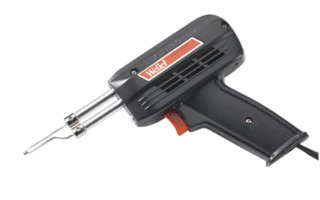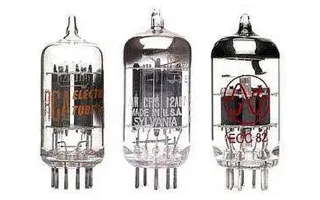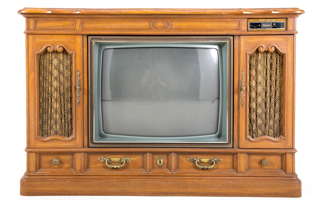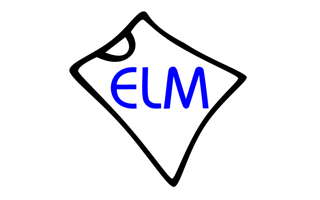What can I say about my Electronics...

I'm not sure just how old I was when my grandparents gave me a Weller soldering gun for Christmas. I think about 10. I had been using this little pencil type iron (really a wood-burning tool) to solder my circuits up and it just wasn't cutting it. With 150 watts of heat, I could really lay the lead on...

In those days we had what was called vacuum tubes. We also had transistors, but they were expensive and hard to get in our small town. You could actually buy 'tubes' at the local drug store! Seriously! When your TV 'went on the fritz', the frst thing you did was hit the side of it. If that didn't work, you had to open te back of the TV and look to see if ne of the tubes was not lit. If there was a dead one, repirs were easy. Pull out the tube and go to the drug store for a replacement. If all were lit, all you could do was get a paper bag out and put all the tubes into it for a trip to the 'tube-tester machine' at the drug store. That machine was the first AI device ever made. You put the tube in, pressed the test button and miraculously after a wait of several second, the machine decided whether the tube was good or bad. Pretty smart, eh?

Well, I progressed from 5 tube radios to transistor amplifiers and radios, then to computers, and the word got out that I was able to fix almost anything electronic. I got console tvs, pinball machines, juke boxes, car ignitions, portable radios, tape players, and cd players to fix. I was able to either fix things for people or at least confirm that I thought it was pooched, too.
Eventually, I went to University to be an Electrical Engineer. Somehow I thought that might mean I would be exposed to the latest diagnostic and repair gear. I was exposed to all kinds of stuff, and some cool diagnostic stuff too. Didn't repair anything though. I had to keep that as my hobby.

Years went by. I had a family. At about the time I decided to quit smoking (for good) a company called Microchip Technology came out with a little 8 pin integrated circuit that had it all inside. It was a little computer with it's own timing oscillator, input/output circuitry, read only memory, random access memory, and timers, counters and other cool stuff all inside. And it only cost a buck. I was smitten. These 'chips' were my newest challenge (and it was a pretty good diversion for getting my mind off of tobacco).
In time I came to know these PIC Chips (as they were often called) very well. I entered some design contests with them, and either won or at least placed well. Maybe I wasn't the best designer around, but I was pretty good in this field. Perhaps there was something more that I could do with them.
Having built many circuits, I knew that the least fun was with the 'glue' circuitry. People would envision a main function for a circuit, start on it and find that the support circuits that 'glued' it all together were a lot of 'not so elegant' work. I knew from experience that a simple debounce circuit, or piezo crystal driver was handy to have in the bin when you wanted to add a pushbutton or buzzer to your circuit. I soon had a binder full of these ideas, and decided to try making some to sell to others. The trouble was that I didn't think that there much more than a dozen or so potential customers living in my city. To open a storefront would not be cost effective.
It just so happened that about that same time, the internet was beginning to grow in leaps and bounds. I could see that I might be able to sell my products to customers around the world at least by email, and possibly through a special form that we could exchange over the internet. I created the Elm Electronics company so that I could start things rolling. The year was 1996.

It took until 1998 to find a company that I could use to process orders through internet forms. I had wanted to do it all myself, but the banks almost refused to talk to me, pretty well saying that the internet would not last, and commerce through the internet was not very likely. A small business course that I took also said much the same thing. It wasn't easy getting the web business up and running, but we did in 1998. I recall having a terrible time doing so - working almost daily with the company that was to do our credit card processing. Errors would occur and none of us could figure out why. It turned out that their software allowed a maximum of 100 products to be listed for sale (as they did not think that internet sales would ever grow beyond that).
Eventually we expanded our product lines into vehicle OBD systems. In the early days of emissions controls, the 'check engine' lights would come on for such things as a loose gas cap or an oxygen sensor that was giving trouble (an easy replacement for most backyard mechanics). But to tell why the light was on required an appointment at the car dealer, and typically a $65 charge to connect their tester. Testers were very expensive for home mechanics (thousands of dollars), so we decided to do something about it. We made a series of 'interpreter' chips that could query the car and translate the response to something readable by a smart device (computer, etc.). It could also be used to reset the check engine light for you. We sold the chips for these, and others built them into circuits for connecting to the vehicles. In 2005, we introduced our popular ELM327 integrated circuit.
As I write this, we are preparing to shut down Elm Electronics. With the Covid epidemic, it has became very difficult to obtain blank integrated circuits for us to program and our inventory is currently almost depleted. Microchip Technology (still our trusted source) is quoting 52 weeks lead time for many parts, and the code that we created for our products ony work on them.
It's been a good run. If I had a chance to rewind time, I'd certainly do it again.
